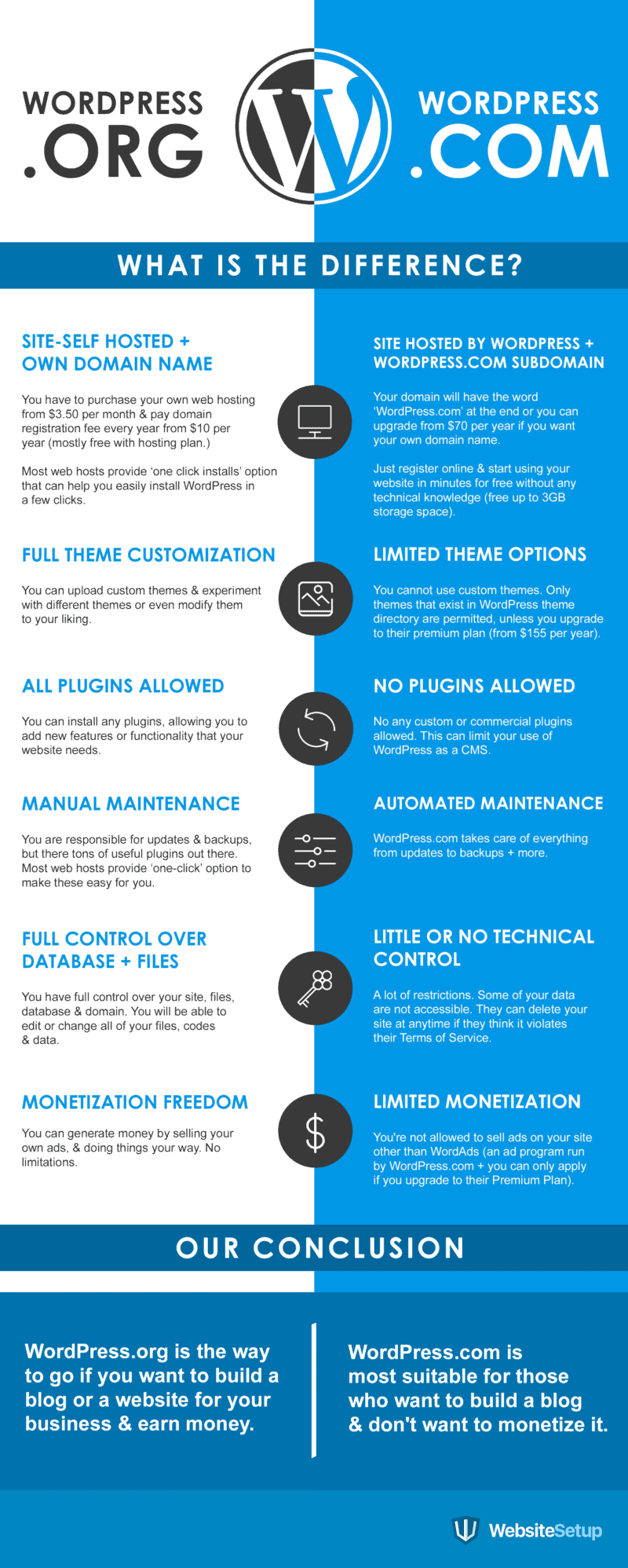
Easily the most popular blogging platform in the world today, WordPress is open source and free to use for everyone – businesses included… The being said, the WordPress platform comes with two very unique (and very different) implementation options. Read on to learn more >>
In a nutshell, the blog creation process starts by implementing either WordPress.org or WordPress.com – two very different, but very powerful platforms – both coming with their own individual sets of pros and cons.
WordPress.com takes care of the hosting and domain requirements for you; though you’ll need to upgrade if you have specific DNS/Domain requirements. With WordPress.org, you certainly have added flexibility with the availability of custom themes, and the ability to host your own database (if only for security reasons). And contrary to popular belief, custom themes are not something that you can utilize with WordPress.com. In fact, plugins can’t even be used with the .com version… Which really restricts your potential for website customization and usability (more than just a little); especially for an SMB or Enterprise sized company’s content marketing goals.
Conversely, WordPress.org gives you direct access to all of WP’s open source PHP/CSS code, with the one major drawback being that all hosting, security, and domain requirements will need to be managed on your end.
Check out the free infographic below – courtesy of websitesetup.org – to learn more about the pros, cons, and differences surrounding both WordPress versions:

